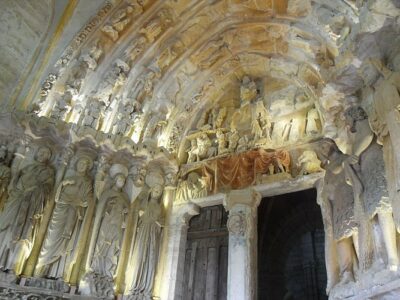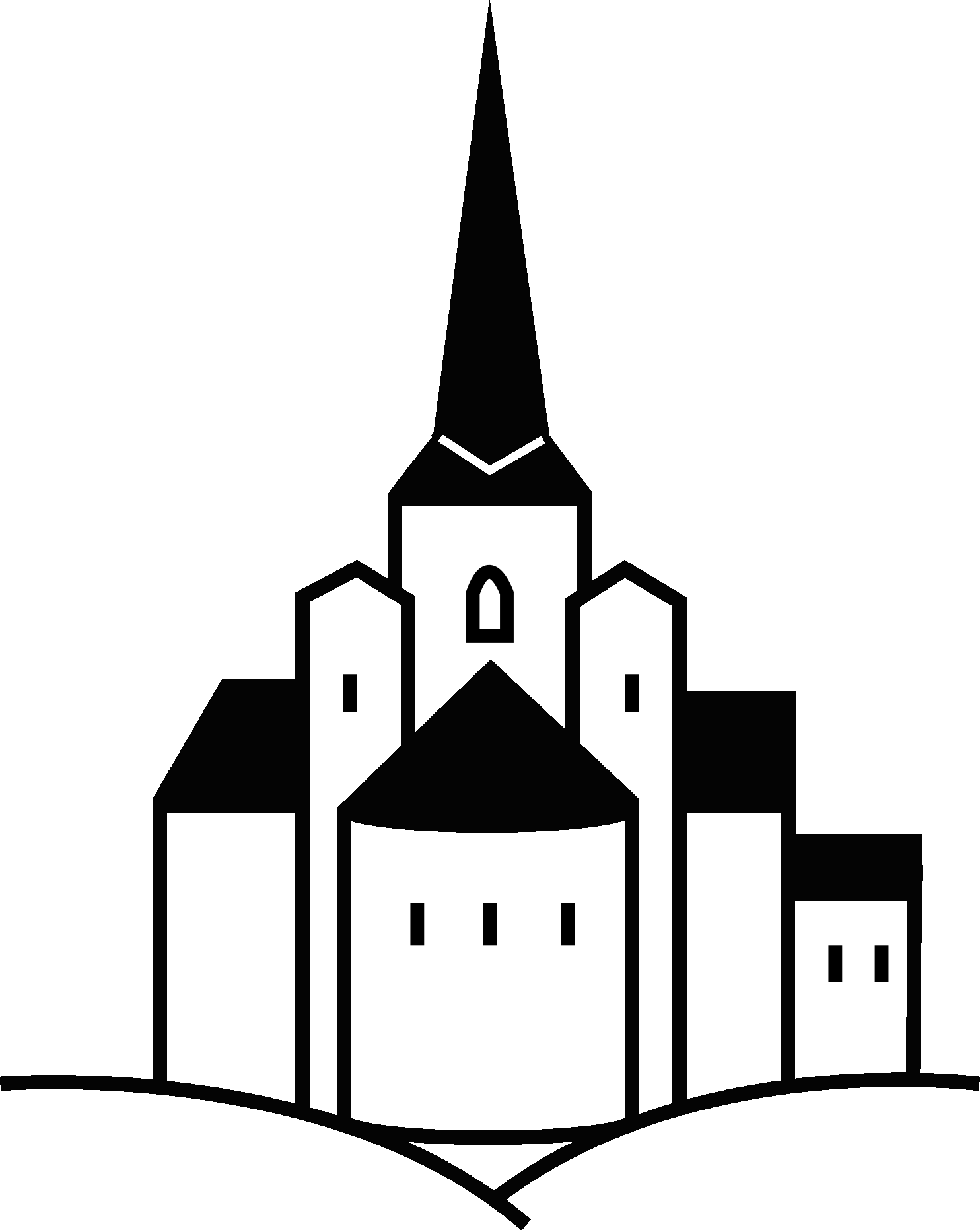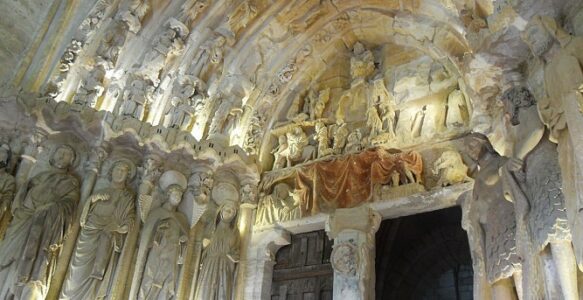The entry portal looks a little like the south portal on the west side of the Cathedral of Reims . In the whole of the Lorraine region, it is the only remaining portal from this period to still have its statues. The pier, the vertical part between the two doors, was originally decorated with a statue of the Virgin Mary standing upright, but it has now disappeared (although the halo is still there). It constituted the symbolic center of the message the sculpted figures presented.

The 2 groups of five statues on each side of the portal are rather unsophisticated figures: those on the right are reminiscent of the Old Testament (the time of the Law), and those on the left are from the New Testament (the time of Peace).
On the right, one sees Eve, Adam Moses, and Abraham together with Isaac and Noah.
On the left, there is a group of statues depicting the Annunciation, including the Virgin Mary and the Angel Gabriel (who is slightly elevated), Isaiah, St. John the Baptist or Jeremiah, and another figure who was first thought to be Pepin of Landen, the donor, because he is offering a model of the church (the donor of a building in the Middle Ages is usually so depicted) but who has now been formally identified as the prophet Ezekiel (Ch. 47).
The style of the portal is that of the master sculptors of Trier or Reims.
It appears that the model for the statuary of Mont can be found in that of Verdun (where the sculpted parts have disappeared, and all that remains is old documentation referring to them).
The tympanum is decorated with bas-reliefs which still have polychrome traces. It is “read” like a cartoon strip from bottom to top, in the form of an “S” (starting at the lower left corner). One can see in the lower rectangle, a Nativity scene: the Virgin Mary is lying down, with a drape covering her, ( possibly to avoid the problem of perspective which the sculptor had not yet mastered or to avoid showing any intimate aspects of the body of the Virgin Mary, who, after all, was a sacred person). On the right, one can see a cow and a donkey around the crib of the Infant, as well as Joseph.
A little higher up, from right to left, we see the Magis, the Shepherds, and the Flight into Egypt. Further up still, there is the Massacre of the Innocents. At the top, there is a figure of Christ in Majesty, or of Herod.
The entire group shows a roughness and a very touching lack of sophistication, which indicates that the work was done locally or by itinerant craftsmen who went from one work site to another.
Under the statues on the sides of the portal, there are some small bas-reliefs with pagan motifs, showing owls, leaves, a dragon, and grimacing figures that were supposed to keep the evil spirits away, which shows the persistence of popular superstitions. One can also see the carved marks of the “Compagnons Passants” (itinerant craftsmen), who worked along the traditional routes of pilgrimage.
The covered porch, added in the 18th century, was damaged by shrapnel during the 1914-1918 War. Certain bas-reliefs which were damaged due to explosions, especially the upper frieze of small houses symbolizing the heavenly City of Jerusalem, broke off (one of these fragments is on exhibit in the western choir).

